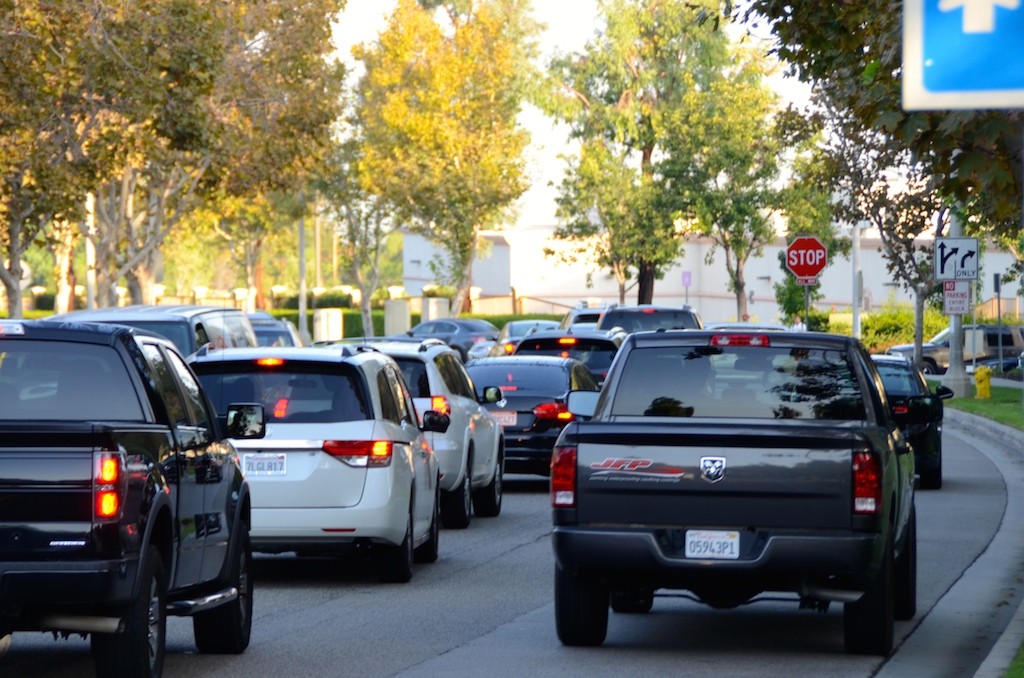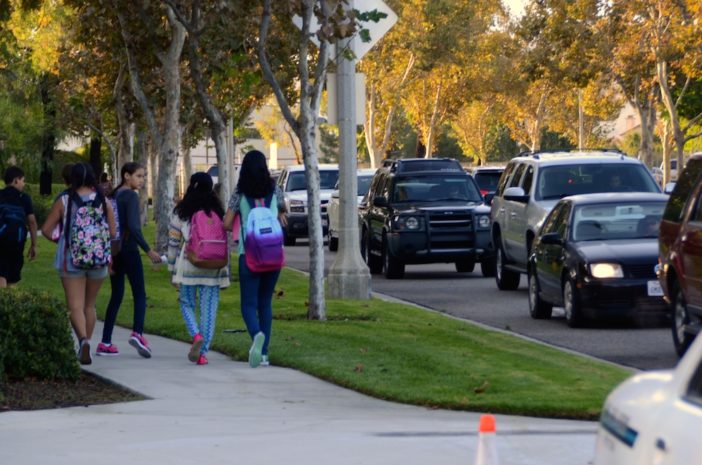It’s that time of year again, when hundreds of kids across the country trek their way to school for another year. Maybe trek is the wrong word since it seems few children walk to school anymore.
For police departments across the country, this adds to a growing issue unique to this generation of schoolchildren: How do you respond to problems related to traffic control at schools?
A few weeks ago, I made the mistake of going out for my morning run not realizing the school session had begun. I try never to run when the school rush is on. I’ve had too many close calls as legions of parents crowd the roadways on their way to drop off their kids. In one incident I ended up on the hood of a car driven by a distracted parent.
The traffic builds up and backs up onto all the roads leading to the schools. In nearby neighborhoods it’s not any safer as dozens of parents pull over to drop off children in an attempt to avoid the lines.
I guess it’s safe if Johnny and Susi walk a couple of hundred yards. For the neighborhoods adjacent to schools some residents have a 20-minute period when they can’t even leave their driveways.
It usually takes months before parents can figure out the traffic patterns and teachers can get a handle on their traffic-control skills.

Hundreds of cars jockey for position as they line up to drop off kids at a Corona school. Photo by Joe Vargas
I wonder if that’s now part of the teacher-training curriculum: how to lay out traffic patterns and basic traffic-control hand signals. I bet they never thought it would be in their job description.
In some cases, teachers end up being referees as drivers get into heated arguments. It never fails: Someone always feels traffic rules don’t apply to them.
It’s been my experience the majority of schools were never designed to handle the hundreds of cars that feed into the parking lots every morning.
I saw a posting on a Facebook group where parents were complaining about a neighborhood that had coned off its streets to keep vehicles out every morning during the school rush. In this case it was perfectly legal since it is a private community.
The problem must have been pretty significant for residents to take such drastic action.
That led to a lot of heated discussion about why everyone drives kids to school. I’m sure if you’re from my generation you walked to school. It was a very rare rainy day when we ever got driven to school.
Being from Southern California, I don’t have any “walking miles in snowdrifts” stories. However, I definitely recall walking in 100-degree heat.
There was a study done that asked parents why they drive their children to school. The two biggest responses were convenience and stranger danger.

A private security vehicle blocks off a neighborhood near Citrus Intermediate School in Corona. Photo by Joe Vargas
I could argue with a great deal of confidence, actual data and 30 years of law enforcement experience that the chances of a child being abducted on the way to school are extremely small. Crime levels are about the same they were in the mid-’70s — an era when the majority of kids walked to school.
But I would never win that argument. I tried with my spouse for years but never got anywhere. I’ve also raised the issue with friends, neighbors and the guy who called to complain why a motor officer wasn’t assigned to every school in the city.
You see, everyone has fallen victim to the “fear of crime” effect. It’s a byproduct of the media, the information age and social media connectivity.
This new-media era makes everyone feel like everything is happening right next door. Dr. Barry Glassner, in his book “The Culture of Fear,” writes: “In national surveys conducted in recent years 3 out of 4 parents say they fear that their child will be kidnapped by a stranger. They harbor this anxiety, no doubt, because they keep hearing frightening statistics and stories about perverts snatching children off the street. What the public doesn’t hear often or clearly enough is that the majority of missing children are runaways fleeing from physically or emotionally abusive parents.”
This culture of fear has affected most Americans’ view of crime in general. In a 2014 Gallup survey, nearly 63 percent felt crime was going up at an astronomical rate, when in fact crime is at record-low levels. (Preliminary data from 2015 may show the first significant increases in over a decade.)
I can’t argue with parents who drive their kids to school. The fear they feel is real. I also won’t judge parents who let their kids walk to school. They care just as much about their children as anyone else.
I do feel for the police officers who have to field calls from irate neighbors, parents and school officials every school year. They are in a no-win situation.
For information on encouraging a safe walking environment to school you can go to the National Center for Safe Routes to School.
Joe is a retired Anaheim Police Department captain. You can reach him at jvargas@behindthebadgeoc.com.
 Behind the Badge
Behind the Badge



